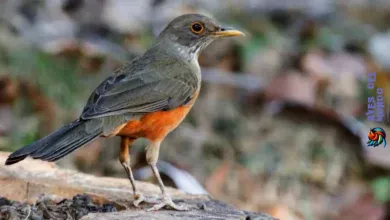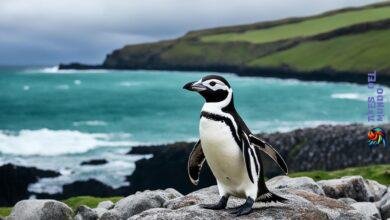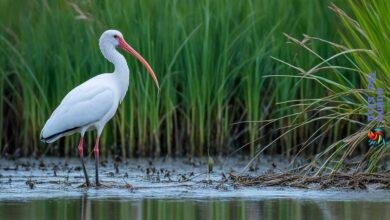Did you know three of the six flamingo species are near-threatened, and two are vulnerable? This fact shows the need for strong conservation strategies and environmental preservation. Flamingos are important for their ecosystems because of their beauty and role.
What you choose to do can help flamingos a lot. You can support wildlife protection and use eco-friendly solutions. When we learn about their threats, we see how our choices affect life everywhere. This article will tell you about the dangers to flamingos and how you can help them.
Understanding Flamingos: An Overview
When you look into flamingos, you see how important it is to save their environment. Efforts to protect them show how keeping the environment safe helps the whole world. Now, let’s talk about the many kinds of flamingos and what makes them special.
The Diverse Species of Flamingos
Flamingos are found all over the world, from the Americas to Africa, Asia, and Europe. There are six kinds of flamingos. Each type lives in a place that has been kept safe for them. The Greater Flamingo, for example, lives in Europe and Africa, while the bright American Flamingo lives in the tropics.
Unique Physiological Traits and Behaviors
Flamingos are interesting because of how they look and act. Their pink color comes from their food, which is full of beta-carotene. They have long legs and curved necks to help them find food in the water. Saving their homes is key to keeping them safe.
Flamingos’ Diet and Foraging Techniques
Flamingos are great at finding food. They turn their beaks upside down to eat from the water. They mostly eat algae and tiny sea creatures. This diet gives them their color. It shows us how important it is to keep their homes safe.
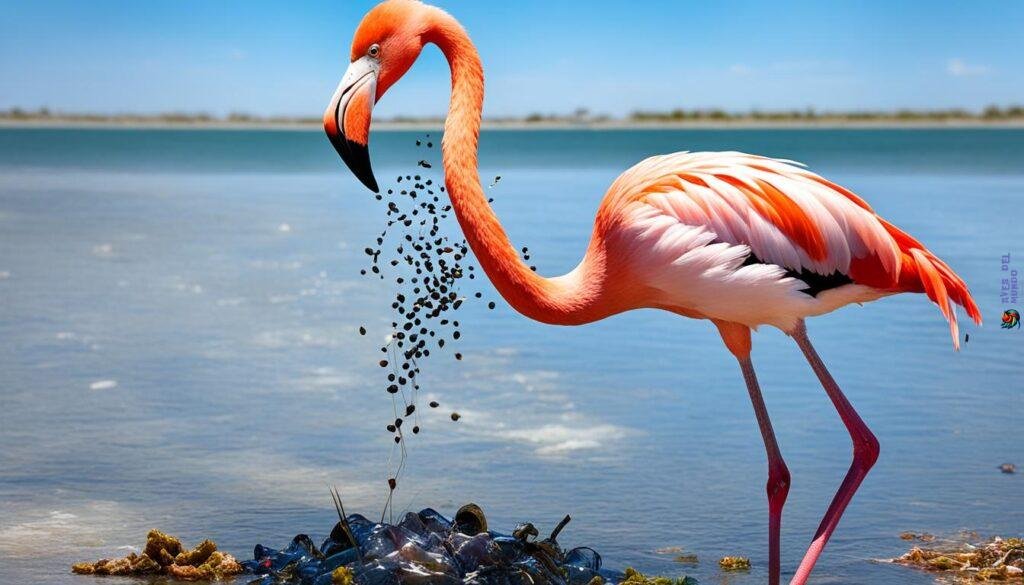
By learning about flamingos, you help protect them. You join the fight to keep nature safe. This helps us all.
The Plight of Flamingos: Main Threats Explained
Flamingos face constant threats from humans and nature changes. To save them, we must focus on preserving their environment and wildlife. This story looks at the main dangers they face and what we need to do to help them survive.
Habitat Loss Due to Humans
Agriculture and cities are taking over flamingo living spaces. Their natural homes like wetlands are being used by humans. This leaves flamingos without places to live, breed, or find food.
Effects of Climate Change on Habitats
Climate change is a big problem for flamingos. Droughts and floods change their homes in bad ways. As their homes get ruined, flamingos struggle to adapt and survive.
Illegal Poaching and Trading
Even though they’re protected, flamingos still face danger from poaching and trading. People want them for their looks, which hurts their numbers and community. This illegal demand makes it hard for them to keep surviving.
Impact of Pollution on Flamingo Health
Pollution seriously affects flamingos. Things like lead and chemicals harm their living places. Actions, such as Mexico’s ban on lead shot, aim to protect these birds and their homes.

These threats show how delicate flamingos’ lives are. But it also tells us that saving the environment is crucial. By supporting sustainability and protecting wildlife, we help flamingos and our planet.
The Role of Human Activity in Threatening Flamingos
When we talk about saving flamingos, it’s key to realize how much we affect their lives. Our wish to grow our farms and build more often leads us to forget about protecting their homes. This is crucial for flamingos to survive. Moving into their areas doesn’t just reduce the space they have. It also messes up the balance of their ecosystems.
Having good resource management helps ensure flamingos can live safely where they belong. But, our growing need for lithium, used in our gadgets, results in mining. This mining changes and harms the flamingo habitats. Adding the bad effects of pollution from industries makes the situation worse for flamingos. Let’s look at how these actions impact them:
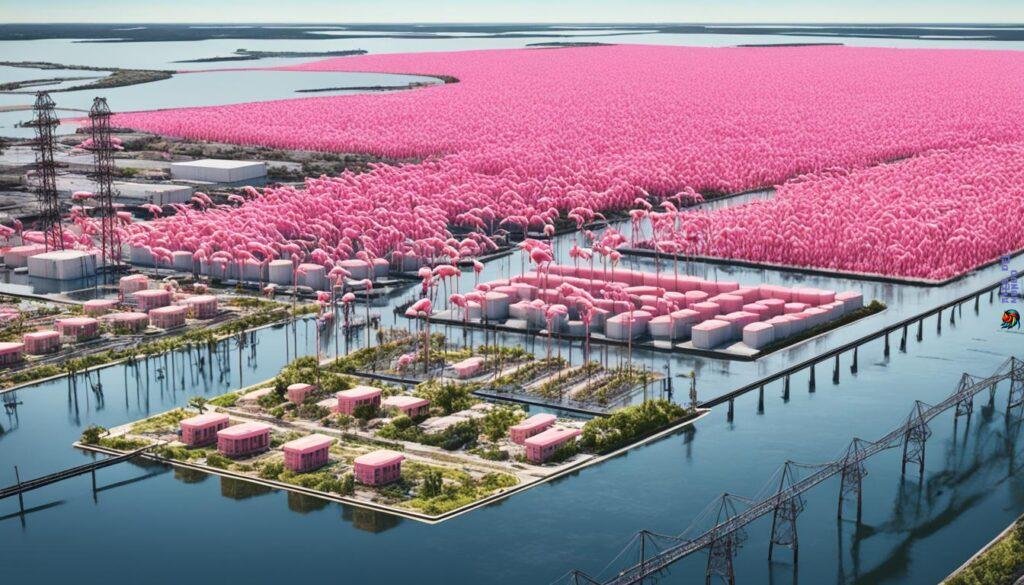
| Human Activity | Consequences for Flamingos | Conservation Challenges |
|---|---|---|
| Agricultural Expansion | Loss of feeding and breeding grounds | Land use prioritization conflicts |
| Infrastructure Development | Disruption of migratory routes | Integrating development with eco-sensitive zones |
| Lithium Mining | Alteration of water quality in salt flats | Implementing and enforcing sustainable mining practices |
| Industrial Pollution | Contamination of water and food resources | Regulations to mitigate environmental pollution |
Overall, what we do deeply affects flamingos. To keep these beautiful birds bright and alive, we need to take care. We must make sure their homes are safe and manage our resources wisely. The wonderful sight of flamingos dancing in the wild depends on us. We have to work with nature, not against it.
Why Conservation Strategies are Imperative for Flamingos
Flamingos stand out with their bright colors and graceful stances. They play a key role in nature and tell us about environmental health. Yet, they face growing threats. This makes conservation initiatives critical to keep them around. Those into green living and eco-friendly solutions should pay attention to saving our diverse wildlife.
Human actions can upset places where flamingos live. Groups like SAFE, SSP, and the IUCN’s Flamingo Specialist Group have taken essential steps against such threats. These efforts show how our choices impact flamingos. By following conservation steps, we help flamingos and support caring for the environment.
- Focus on habitat preservation and restoration
- Monitoring of flamingo populations and research
- Increasing public awareness and engagement
- Fostering international cooperation among conservationists
Each flamingo saved is a step towards a healthier ecosystem, preserving a world that future generations deserve to inherit.
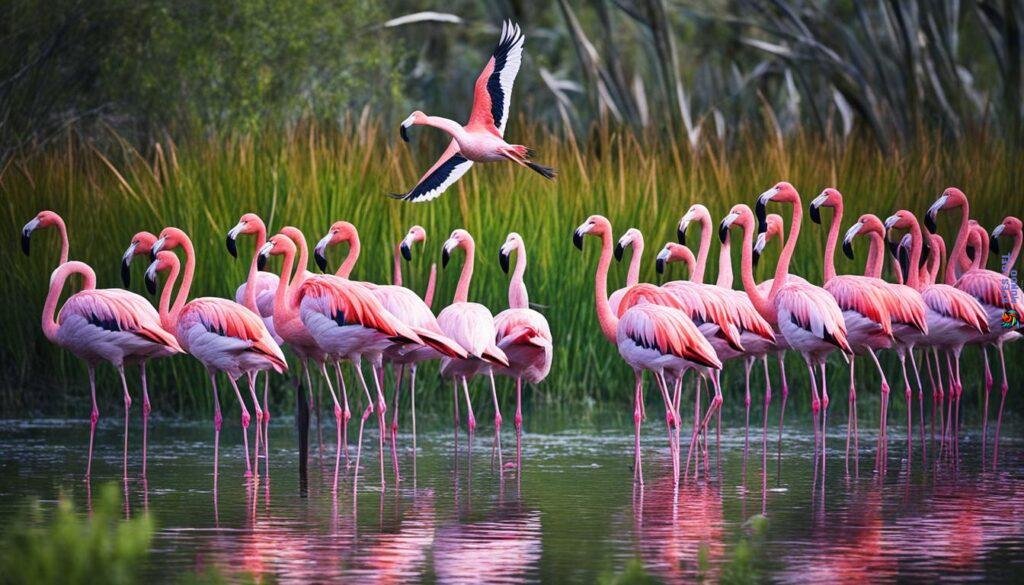
The things you buy and support each day can help flamingos. You can help by promoting eco-friendly tourism, managing resources wisely, or teaching others about conservation. Engaging in green living means you join a worldwide effort. This effort aims to protect our planet’s beauty and variety.
Examining Flamingos’ Habitats: Lakes, Lagoons, and Salt Flats
Flamingos shine in harsh areas where most animals can’t live. The need for habitat conservation is huge in these zones. It ensures flamingos and many other creatures keep thriving. We’ll explore the special homes of these bright birds and how their survival depends on them.

Adaptations to Brackish and Alkaline Environments
Flamingos have adapted to live in salty and alkaline places. Saving these natural homes is key for flamingos to survive. It’s also vital for all life in these ecosystems. Keeping these habitats safe helps the whole environment.
Importance of Water Bodies for Flamingo Survival
Lakes, lagoons, and salt flats are more than pretty scenes. They’re central to flamingos’ lives. Here, they find food, shelter, and places to raise young. Efforts to conserve biodiversity and habitats protect these vital areas, helping flamingos and other wildlife thrive.
| Habitat Type | Food Sources | Predator Protection | Temperature/Salinity Tolerance |
|---|---|---|---|
| Lakes | Algae, small invertebrates | Large groups deter predators | Can regulate body temperature in varying conditions |
| Lagoons | Shrimps, snails, plant matter | Shallow waters prevent large predators | High salinity adaptation for filtering food |
| Salt Flats | Brine flies and shrimp | Inaccessible to most predators | Survive in extreme saline conditions |
Lithium Mining: A Significant Hazard to Flamingo Habitats
Our love for tech is increasing the demand for lithium. This is found in rechargeable batteries. Sadly, to get more lithium, mining has grown. This is bad for places where flamingos live, like salt flats. We need to find a balance between needing resources and keeping these areas safe.
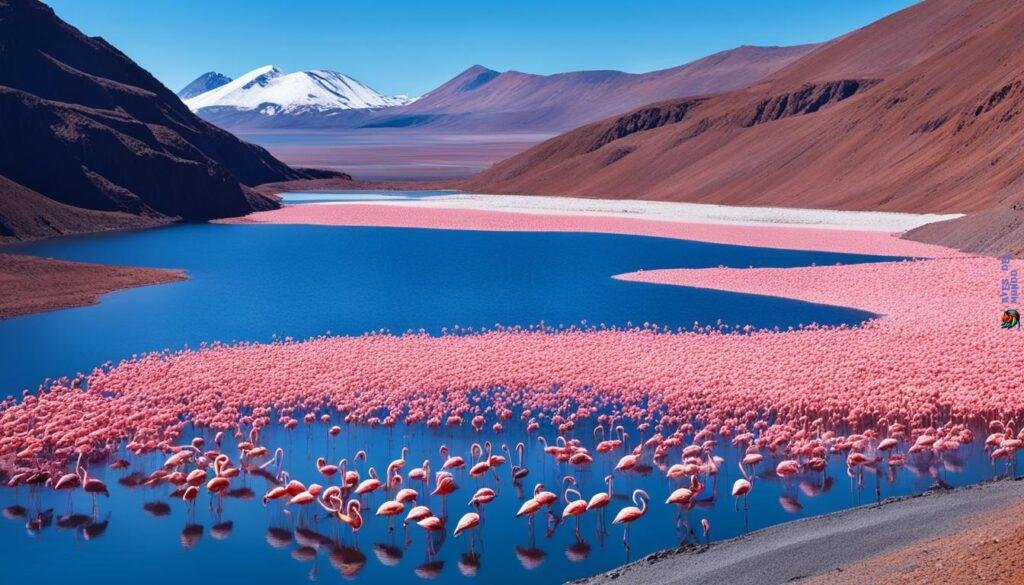
It’s important to stop harming flamingo habitats. Mining lithium means taking underground water to the surface. Then, they wait for it to dry up to get lithium. This process ruins the places where flamingos live. By knowing where your lithium comes from, you can help. And you’ll support keeping these places safe.
To help you see what’s at risk, here’s a table. It shows the difference between regular lithium mining and better ways to do it. These better ways are less harmful to flamingos.
| Traditional Lithium Mining | Sustainable Alternatives |
|---|---|
| Large-scale evaporation ponds | Direct lithium extraction techniques |
| Extensive water usage from local sources | Recycling and using non-freshwater sources |
| Long-term disruption of natural habitats | Minimized land footprint and quicker restoration methods |
| Flamingo populations displacement | Habitat-conservation initiatives alongside mining |
Using better practices is key to less harm from lithium mining. It’s important to manage our resources better. This includes wasting less and recycling lithium batteries. By doing this, we help keep flamingo homes safe for the future.
We must make tech advances that don’t harm our planet. By following better practices, we can find a balance. This means we don’t have to sacrifice nature for progress. Flamingos and their homes can stay safe and sound.
Flamingo Social Structure and Its Survival Implications
When you look at flamingos, their bright colors catch your eye first. But, their complex social structure is crucial for survival. This structure builds a strong community and protects them from tough habitats. By understanding their social dynamics, we see the vital role each flamingo plays in its group.

The Benefits of Living in Large Colonies
Flamingos benefit a lot from living in big groups. They form large groups in wetlands, working together to face challenges. Living together helps them find food, care for young, and protect against predators. This group lifestyle isn’t just a habit—it’s a survival strategy that shows the importance of unity in wildlife protection.
Social Behaviors and Group Dynamics
Every flamingo in a group plays a key part in their social life. Their dances and calls are not just for show; they’re vital for communication and harmony. These behaviors keep the group united and secure, which is crucial for protecting their environment.
In nature, flamingos display both individual beauty and the power of teamwork. We should learn from them to stress protecting wildlife and their homes. Doing so will help these beautiful birds thrive for many years.
Effective Conservation Initiatives by Global Organizations
Today, global organizations are leading the way with innovative conservation strategies to help flamingos. They bring together experts, advocates, and volunteers. Together, they work hard to protect these beautiful birds for the future.
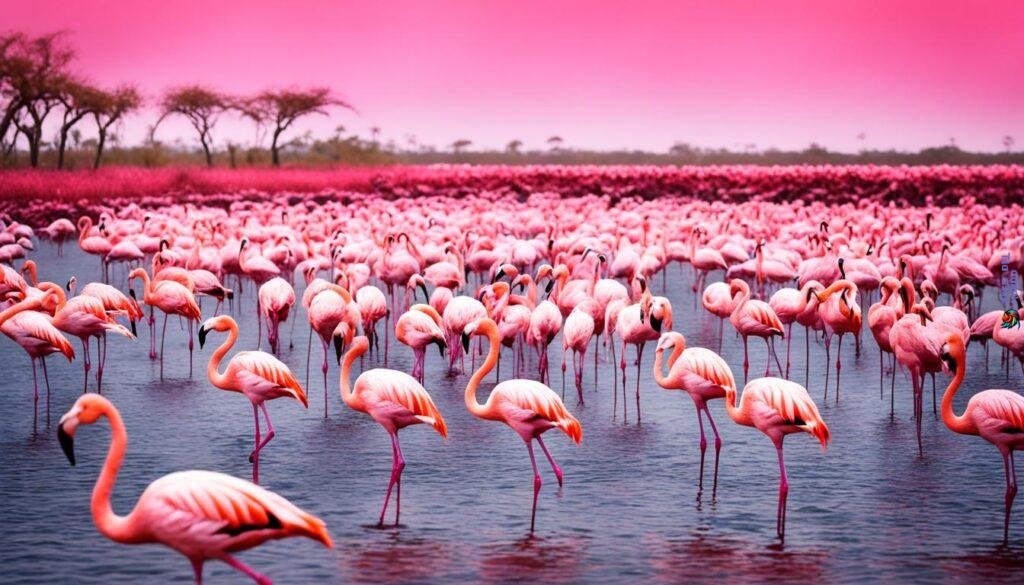
The Role of BirdLife in Flamingo Preservation
BirdLife International has achieved great things for flamingos. They helped Argentina’s Mar Chiquita become a national park. This move protects one of the biggest salt lakes in the Americas, which is crucial for flamingos.
Conservation Efforts by Reid Park Zoo Crew
Reid Park Zoo leads the way in zoo conservation for flamingos. They’re active in the Saving Animals From Extinction (SAFE) program and the Species Survival Plan (SSP). Their efforts are making a difference for flamingos around the world.
IUCN Red List and Flamingo Conservation Status
The IUCN Red List is key for tracking flamingo conservation. It helps experts create conservation initiatives that meet the needs of different flamingo species. This ensures their conservation status is well managed.
Sustainable Living and Eco-friendly Solutions to Protect Flamingos
We need to understand how sustainable living helps save flamingos. Every choice we make affects their homes. Living green is crucial, not just a trend. It helps these beautiful birds thrive. By picking eco-friendly solutions, we reduce our impact on nature. This way, we help flamingos survive for many years. This is the true power of sustainability practices.
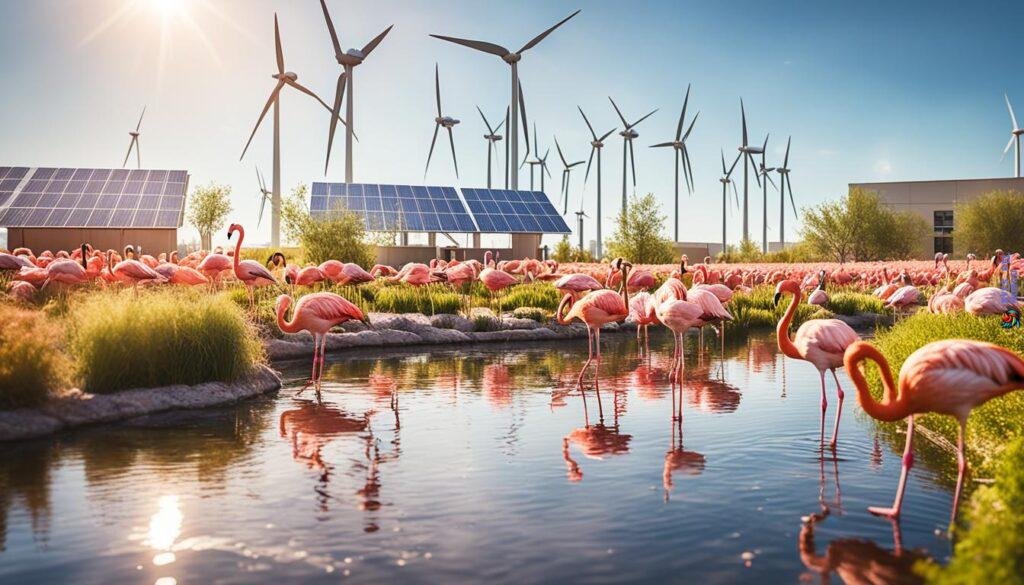
To protect flamingos, we must consider how our actions influence them. Reducing electronic waste helps avoid disrupting their habitats. This is due to less lithium mining. Supporting businesses that manage resources well is also key. Your actions make a big difference.
Choosing to be eco-conscious helps our planet and the flamingos’ homes.
Here are some easy green living tips:
- Cut down on electronic use and recycle old gadgets
- Support laws that favor sustainable living
- Buy from companies that care about the environment
Change starts with us but involves everyone. Teaching others and promoting responsible choices can save flamingos. Living green means helping our birds and the whole planet.
| Eco-friendly Action | Impact on Flamingos | Long Term Benefits |
|---|---|---|
| E-Waste Reduction | Less pollution and habitat harm | Better health for all species |
| Supporting Sustainable Brands | Reduces harmful environmental practices | Pushes markets toward green practices |
| Legislative Advocacy | Helps protect animal homes | Lays the groundwork for conservation |
Adopting these sustainable habits makes a world where flamingos flourish a real possibility.
The Influence of Diet on Flamingo Health and Coloration
Flamingos are a prime example of how diet affects wildlife. Their bright colors show their health and what they eat. Let’s explore how carotenoids, found in their food, are key for their health and unique color.
Carotenoids and Feeding Habits
Managing resources is key to giving flamingos a steady diet rich in carotenoids. These pigments are found in algae and some crustaceans. They’re essential for flamingos. Once eaten, carotenoids go into the birds’ feathers, making them pink or red.
The Link Between Nutrition and Plumage
The link between a flamingo’s diet and feather color is fascinating. We need eco-friendly ways to keep their habitats safe. This helps flamingos get the right food to get those pigments into their feathers. A flamingo’s bright color also shows it’s healthy and has good food.
Eco-friendly efforts are vital for keeping flamingo food sources healthy. By looking after ecosystems wisely, we ensure flamingos keep their beautiful colors. This shows they are eating well and are in good health.
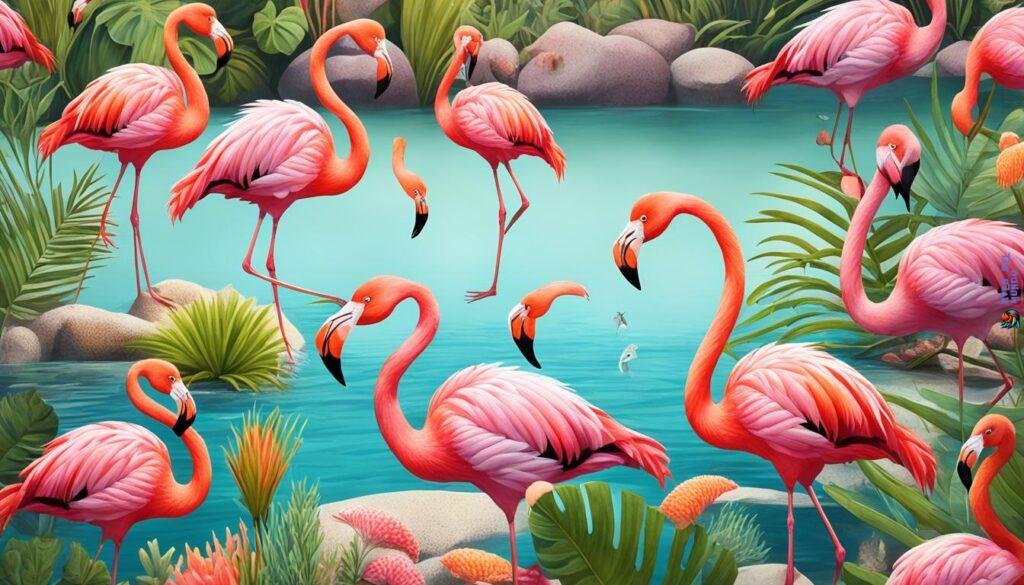
Seeing the beautiful colors of flamingos makes us value the connection between their diet and health. It’s important to help with environmental care and managing resources. This keeps the balance that lets these amazing birds thrive in the wild.
| Carotenoid | Primary Food Source | Resulting Feather Color |
|---|---|---|
| Astaxanthin | Shrimp, Algae | Deep Pink to Red |
| Canthaxanthin | Brine Fly Larvae | Bright Pink |
| Beta-Carotene | Algae | Pale Pink |
| Lutein | Aquatic Plants | Orange Tinges |
In conclusion, creating a supportive environment is key for flamingo conservation. By safeguarding their diet resources, we help their health and beauty. This also supports the stability of their populations.
The Science of Flamingo Reproduction and Nesting Practices
Studying flamingos shows us the complex ways they reproduce and build nests. This highlights why we must protect wildlife and the environment. These birds perform detailed courtship dances. It shows their commitment to keep their species going.
Courtship behaviors and Pair Bonding
Flamingos create a special connection in shallow waters. Their courtship is a mix of moves and sounds. It leads to strong pairs, showing how well they stick together.
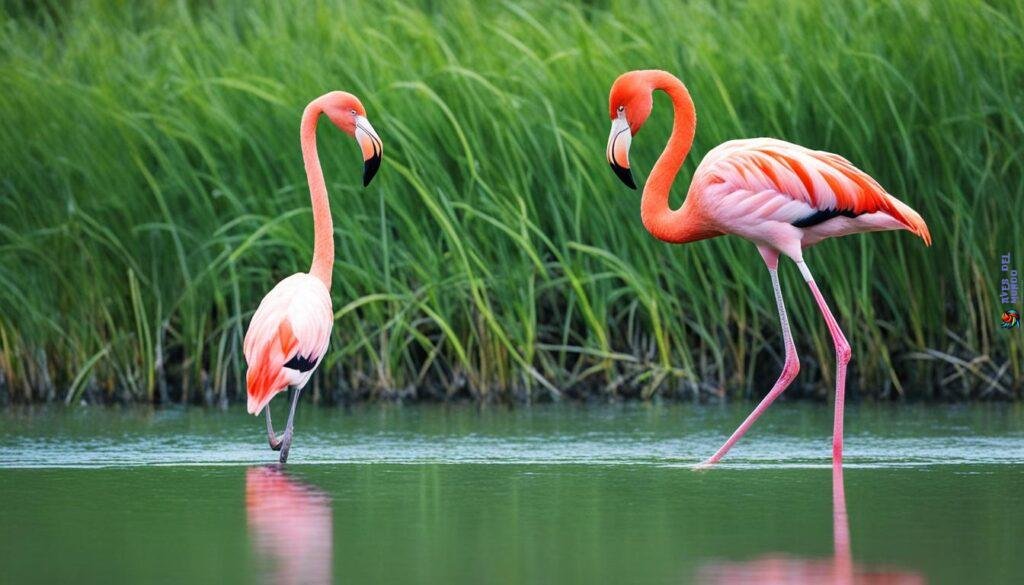
Nest Building Techniques and Chicks’ Development
Flamingos work together to build nests. This shows how much they care about their future chicks. They use mud to make safe places for their young, overcoming many challenges.
After eggs hatch, chicks join groups called crèches. Here, they grow and learn important skills. This close care highlights why we need to keep protecting their environment.
| Aspect of Reproduction | Details |
|---|---|
| Courtship Rituals | Complex displays of synchronized movements and vocalizations |
| Pair Bonding | Monogamous pairs often formed for a breeding season or longer |
| Nesting | Communal mound building from mud to protect against elements |
| Chick Care | Young cared for by multiple adults in crèches, fed with crop milk |
| Chick Development | Learning to swim and walk, leading to eventual independence |
Flamingos amaze us with their courtship dance, nest building, and chick care. Their practices show how deeply they care. They remind us of our role in protecting these magnificent birds.
How You Can Contribute to Flamingo Conservation
Your love for green living and environmental preservation can help save flamingos. Changing how you use electronics is key. These gadgets need lithium, which is mined in places flamingos live. By recycling electronics and choosing companies that mine responsibly, you’re making a big difference. This shows you care about buying products that don’t harm flamingo homes.
Being proactive is crucial in saving these beautiful birds. Learn about the threats flamingos face to help them. You can donate money or time to conservation groups that know how to make a real impact. These acts support research, protect homes for flamingos, and spread the word about saving them. Your help grows a community that keeps conservation efforts strong.
Talking to people in your area can inspire them, too. Share ways to live sustainably and teach about the environment. Taking steps towards a greener life matters. Whether you pick an eco-friendly item or back up big conservation projects, it all helps. Together, our actions create a strong network that keeps flamingos and their homes safe.
